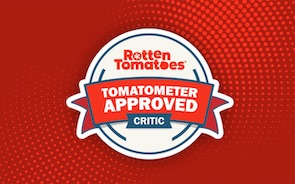{googleAds}
<div style="float:left">
<script type="text/javascript"><!--
google_ad_client = "pub-9764823118029583";
/* 125x125, created 12/10/07 */
google_ad_slot = "8167036710";
google_ad_width = 125;
google_ad_height = 125;
//-->
</script>
<script type="text/javascript"
src="http://pagead2.googlesyndication.com/pagead/show_ads.js">
</script></div>{/googleAds}Very early in the history of film different filmmakers sought to tell the story of the world's infamous vampire. Bram Stoker's most famous creation has influenced popular culture in all it's incarnations since it appeared in 1897 - some might argue to the point of over-saturation. In the world of film, Dracula has been attempted somewhere north of one hundred and fifty times, with varying levels of success. After so many attempts, when word trickles down another is on the way, (as is rumoured currently with Guillermo del Toro) the first question to pop up is ‘Why?"...
In 1992, Francis Ford Coppola brought the world his film version of the classic Victorian horror novel, and after the disappointment of Godfather 3 did so to great financial and critical success. The idea was to be faithful to author Bram Stoker where most film versions are not and to imbue it with an emotional intensity and talent roster not afforded the Count's tale in a long time. In short: it worked.
Coppola's version is a challenging interpretation, absolutely packed to the brim with virtues and equal flaws what it does prove unequivocally is that it is possible for a filmmaker to be reasonably faithful to the source, and at the same time put their unique stamp on it. Coppola's flair for the theatrical, his almost abstract perception, and his bigger than Ben-Hur personality are all over this film. While this version is much closer to the novel than most, it does not as many involved have claimed faithfully invoke its main thematic premise, preferring to change the relationship of Dracula and Mina Harker to a romantic one, and to embellish a back-story that anchors this change throughout the film. It does this so strongly that it becomes the predominant thematic spine, and makes it a completely different story to the source it's trying to honour. But faithful or not, it's a good story.
Coppola has said his casting was heavily influenced by Winona Ryder (who brought James V. Hart's script to him) Whether acquiescing to Ryder's wish list or not - as he almost always does - Coppola drew unto him some of the finest actors of the day to inhabit these classic characters, and in a project of this notoriety it was a smart move... with one exception: Keanu Reeves was completely miscast, and unlike his colleagues, never comfortably rests in his character's shoes. Gary Oldman of all the fine actors, including Anthony Hopkins is the reason this film works. His unique portrayal of Dracula was at the time - a refreshing and surprising take on the character. Again, this is not the Dracula of the novel, but it is a compelling version of him, instilling the Count with a tragic back-story, and in turn underpinning his ‘evil' persona with a contextually credible (if morally unacceptable) reason for being the ‘devil' he is.
Coppola's style leans heavily towards surrealism, and this successfully aids in giving the film it's strangeness and slightly off-kilter feel throughout. The production design and Oscar winning costume design avoid all previous versions, and deliver a unique and unexpected world for Dracula (no cape for Drac; no cheesy haunted castle) and in turn deliver a plausible Victorian-era England. The score is verbose, and - like it's director - unsubtle, packing an emotional punch and successfully instilling a sense of strength and fear the two emotional linchpins of this version's title character. And of particular note should be the cinematography of Michael Balihaus and effects of Roman Coppola, who at the insistence of Frances avoided all burgeoning modern film techniques, including CGI, and guided the creation the film's rich, complex visuals in camera.
When Coppola's name is mentioned, usually The Godfather is not far behind as the example of his talent and will power; his ability to get a film made his way; and his rare ability of making any story, no matter how identifiable, mould to his style. Bram Stoker's Dracula will probably never be seen in this light, being a ‘genre picture'... but it should be: this is a film that came at a point in the director's career when he had become disillusioned with filmmaking in the studio system. In spite of this, his version of Dracula has all the trademarks of a good Coppola picture especially that boldness to step away from expectation. For a story that has been told and retold hundreds of times, this is exactly what it needed. Because Coppola is a filmmaker that doesn't compromise, the world now has one of the most unique and memorable interpretations of Bram Stoker's novel to date, and a good answer to that question â"Why?"
DVD Details:
This new two-disc release is lacking in the features department. There are a few gems, including one of the best director's commentaries out there from Coppola, but there is no retrospective involvement from any of the cast; a boring re-cut featurette from the time of filming; a few interesting featurettes from some of the crew... and a whole bunch of trailers, but they don't amount to much more than the previous release. Where it does deliver is in the new re-mastered presentation, which is rich and a marked improvement to the last release.
Screen formats: Widescreen Anamorphic 1.85:1
Subtitles: English; Korean; Spanish
Language and Sound: Closed Captioned; English: Dolby Digital 2.0 Surround; English: Dolby Digital 5.1; French: Dolby Digital Mono; Spanish: Dolby Digital Mono
Other Features: Color; interactive menus; scene access; deleted scenes; outtakes; several featurettes.
* Commentary - full-length audio commentary with director Francis Ford Coppola four-minute video introduction
* Documentaries -
o The Blood is Life - The Making of Dracula (29:00)
o The Costumes and the Sets - The Design of Eiko Ishioka (14:00)
o In-Camera - The Naïve Visual Effects of Dracula (19:00)
o Method and Madness - Visualizing Dracula (12:00)
* Deleted and extended scenes - subtitled in Japanese, Portuguese, Spanish, and Korean, but not English or French
* Trailers - two different ones for Bram Stoker's Dracula and many for other Sony titles.
Number of discs: - 2 with Keepcase packaging
{pgomakase}





























